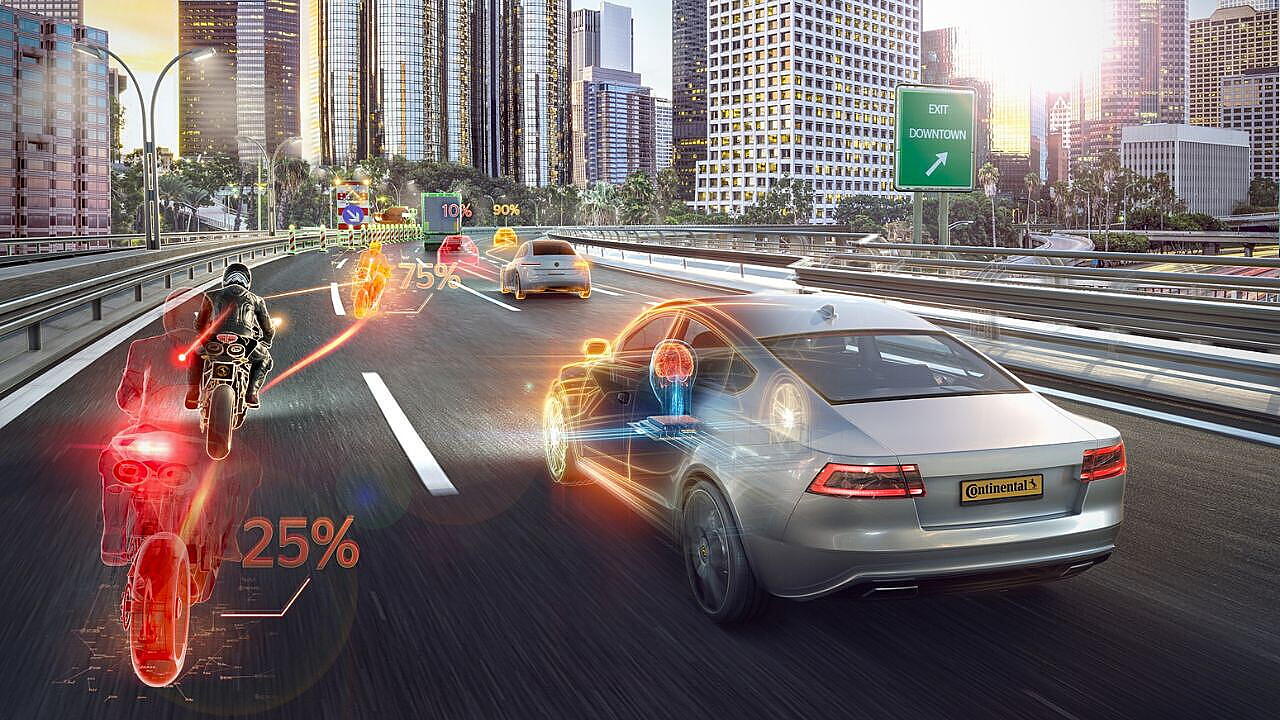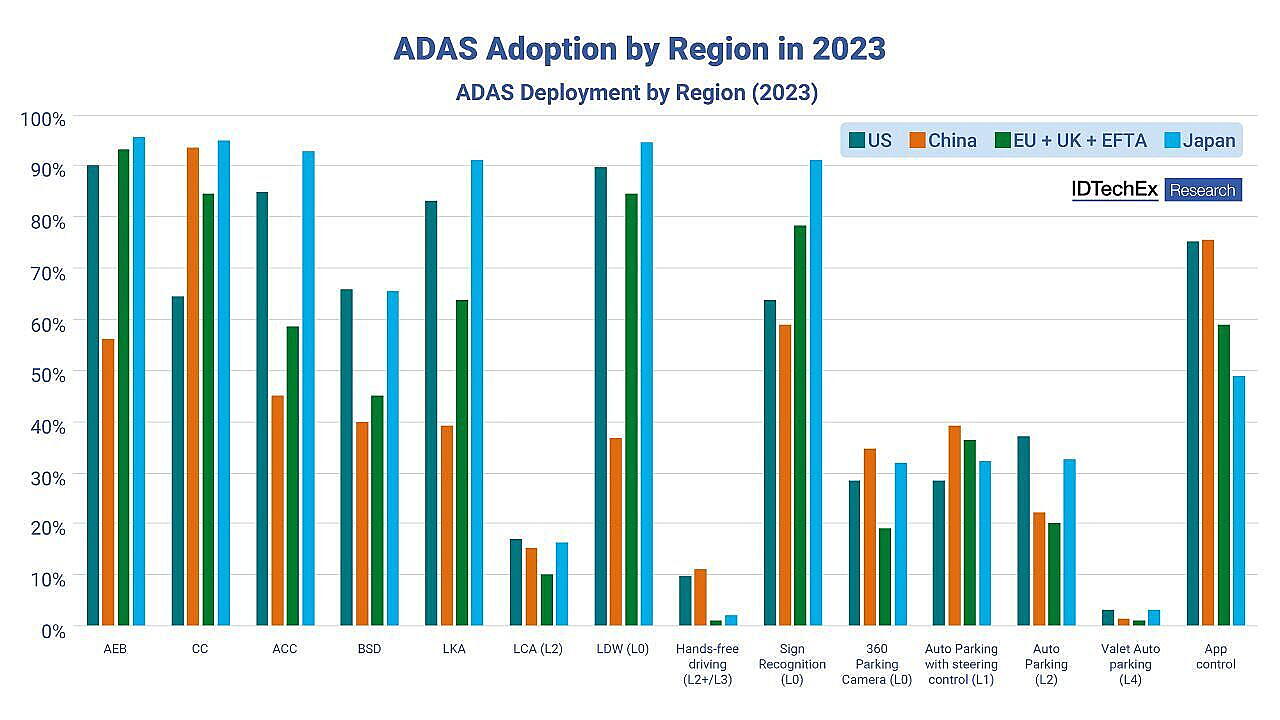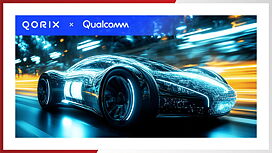
The promise of self-driving cars has long captivated the automotive world, but the reality of autonomous mobility has proven far more complex than once envisioned.
In 2017, Audi's attempt to bring Level 3 (L3) autonomy to the market with its L3-ready A8 met a major roadblock, which is regulation. Without a clear legal framework to govern such advanced systems, deployment stalled—and with it, the momentum around consumer-owned L3 vehicles.
It wasn't until 2021 that regulatory clarity began to emerge with UNECE guidelines, which provided a foundation for L3 approvals in Europe and other select global markets. However, national-level adoption has been slow and cautious, with only Germany and Japan actively certifying and deploying L3 vehicles in limited numbers.
According to Shihao Fu, Technology Analyst at IDTechEx, Germany has led the charge with Mercedes-Benz and BMW models, and Mercedes has recently expanded L3 certification to Nevada and California in the US. Despite these advances, L3 remains a niche, hindered by cost, liability issues, infrastructure readiness, and regulatory hesitancy.
Level 2+ Gains Traction
While L3 autonomy crawls forward, Level 2+ (L2+) driver assistance systems have surged ahead, offering a compelling middle ground between driver control and intelligent automation. Unlike L3, L2+ still requires the driver’s attention but allows for hands-free, semi-automated driving under specific conditions. Major OEMs are increasingly leaning into this segment, and IDTechEx projects that over 50% of new vehicles will offer L2+/L3 functionalities by 2035, with L2+/L3 revenues in Europe alone set to exceed US$4 billion by 2042.
In the US, GM’s Super Cruise and Ford’s BlueCruise have set a strong precedent, now available on over 20 vehicle models with more than 750,000 miles of mapped roadway coverage. Europe, traditionally conservative in autonomous technology rollout, is rapidly catching up. Recent regulatory exemptions have opened the door for hands-free driving, with formal legislation expected to follow soon, he observed.

European Automakers Embrace L2+ As A Scalable Solution
Fu said BMW recently made headlines as the first European carmaker to offer hands-free driving at up to 130 kmph through its Highway Assistant feature, now available in the new 7 Series and i5. The system includes lane centering, adaptive cruise control, and automated lane changes, though driver attention is still mandatory.
Mercedes-Benz, a pioneer in L3 with its Drive Pilot system, continues to build out its L2+ suite. While Drive Pilot offers hands-off, eyes-off capabilities at low speeds in heavy traffic, its real-world application remains limited. Meanwhile, Mercedes’s broader L2+ features—including Adaptive Cruise Control, Lane Keeping Assist, AEB, and automated lane change—serve as the brand’s primary offering for highway automation, with Drive Pilot's max speed expected to rise to 95 kmph by late 2024.
Volkswagen Group, including VW, Audi, and Porsche, is also ramping up its L2+ capabilities. Audi, once focused on L3, has refocused on enhancing its Travel Assist suite, which offers lane centering, adaptive cruise control, and limited lane-change automation. The shift reflects a broader industry trend: instead of chasing regulatory approval for L3, OEMs are optimizing L2+ for broader market acceptance and usability.
China, Tesla Push Global Envelope
As per Fu, China's rapidly advancing L2+ market continues to be a hotspot for innovation, with Tesla planning to roll out Full Self Driving (FSD) capabilities there by 2025. Despite regulatory restrictions in the EU—such as requiring manual lane-change confirmation and frequent driver attention prompts—Tesla’s Autopilot and Enhanced Autopilot packages remain the benchmark for AI-driven L2+ autonomy. Its HW4.0 platform further intensifies the competition, pushing the capabilities of L2+ toward new frontiers.
The Road Ahead
The current trajectory of autonomous driving highlights a shift from radical disruption to incremental evolution. L3 autonomy, while technologically viable, faces formidable barriers in regulation, cost, and operational domain. On the other hand, L2+ systems are pragmatic, scalable, and increasingly refined, offering drivers a tangible taste of autonomy without surrendering control or responsibility.
According to IDTechEx’s new report, 'Passenger Car ADAS Market 2025–2045: Technology, Market Analysis, and Forecasts', the next two decades will see exponential growth in ADAS technologies, with 14+ features analysed in depth, from sensor stacks to SoC performance. By 2045, the global ADAS market is projected to exceed US$16 billion, driven predominantly by L2+/L3 systems.
As automakers recalibrate their strategies and regulatory bodies refine their frameworks, Level 2+ is emerging as the sweet spot in the autonomy spectrum—where innovation, usability, and market readiness converge.
NB: Featured photo is representational; courtesy: Continental.
Also Read:
Altair Joins CAAR To Drive Innovation In E-Mobility, Autonomous Vehicles

